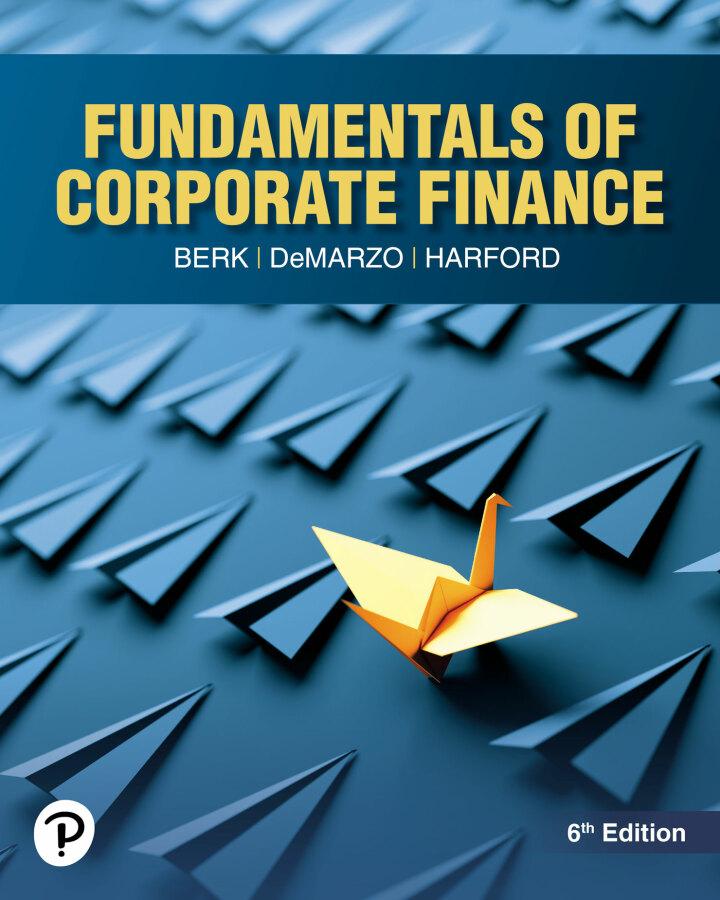In your role as a consultant at a wealth management firm, you have been assigned a very
Question:
In your role as a consultant at a wealth management firm, you have been assigned a very powerful client who holds 1 million shares of Cisco Systems, Inc., purchased on January 4, 2007. In researching Cisco, you discovered that they are holding a large amount of cash.
Additionally, your client is upset that the Cisco stock price has been somewhat stagnant as of late. The client is considering approaching the Board of Directors with a plan for half of the cash the firm has accumulated, but can’t decide whether a share repurchase or a special dividend would be best. You have been asked to determine which initiative would generate the greatest amount of money after taxes, assuming that with a share repurchase your client would keep the same proportion of ownership. Because both dividends and capital gains are taxed at the same rate (20%), your client has assumed that there is no difference between the repurchase and the dividend. To confirm, you need to “run the numbers” for each scenario.
1.Determine the amount of cash and short-term investments Cisco currently holds from its most recent financial statements. Look up the current share price of Cisco, as well as the total number of shares outstanding.
2.Using one-half of Cisco’s cash and short-term investments, compute the following:
a. The number of shares that would be repurchased given the current market price.
b. The dividend per share that could be paid given the total number of shares outstanding.
3.Determine the price at which your client purchased their shares (based on the closing price for that day). Hint: Many financial websites provide historical stock prices for free.
4.Compute the total cash that would be received by your client under the repurchase and the dividend both before taxes and after taxes. In the case of a share repurchase, assume your client sells the number of shares required to keep the same percentage ownership of firm.
5.The calculation in step 4 reflects your client’s immediate cash flow and tax liability, but it does not consider the final payoff for the client after their remaining shares are liquidated (sold). To incorporate this aspect, you first decide to see what happens if the client sells all remaining shares of stock immediately after the dividend or the repurchase. Assume that the stock price will fall by the amount of the dividend if a dividend is paid. What are the client’s total after-tax cash flows (considering both the payout and the realized capital gain or loss) under the repurchase or the dividend in this case?
6.Under which program would your client be better off before taxes? Which program is better after taxes, assuming the remaining shares are sold immediately after the dividend is paid?
7.Because your client is unlikely to sell all 1 million shares today, at the time of dividend/
repurchase, you decide to consider a longer holding period: Assume that the client sells all remaining shares of stock in 10 years. Assume that the stock will return 10%
per year going forward. Also assume that Cisco will pay no other dividends over the next 10 years.
a. What would be the stock price after 10 years if a dividend is paid now?
b. What would be the stock price after 10 years if Cisco repurchases shares now?
c. Calculate the total after-tax cash flows at both points in time (when the dividend payment or the share repurchase takes place, and when the rest of the shares are sold) for your client if the remaining shares are sold in 10 years under both initiatives.
Compute the difference between the cash flows under both initiatives at each point in time.
8.Repeat Question 7 assuming the stock will return 5% per year going forward. What do you notice about the difference in the cash flows under the two initiatives when the return is 5% versus 10%?
9.Based on your observation in Question 8, compute the NPV of the difference in cash flows. What discount rate should you use?
10.Repeat the analysis for a different time horizon. How does the NPV you computed depend on your client’s investment horizon?
Step by Step Answer:

Fundamentals Of Corporate Finance
ISBN: 9780137852581
6th Edition
Authors: Jonathan Berk, Peter DeMarzo, Jarrad Harford





